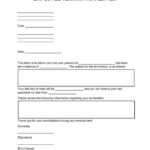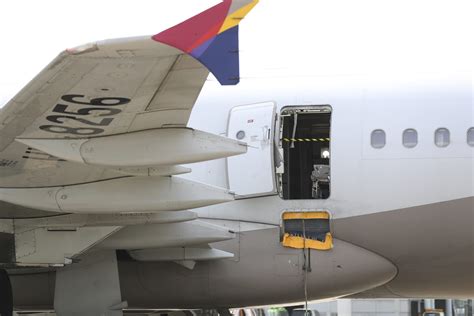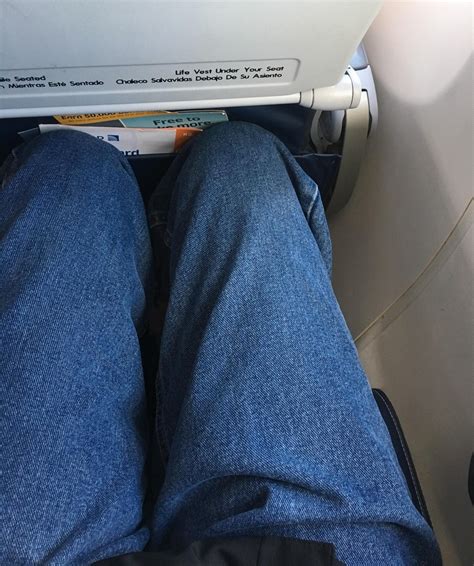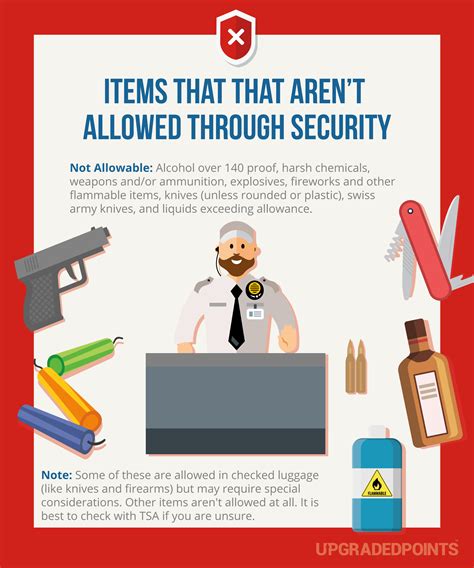
A passenger’s initial excitement over a complimentary upgrade on a flight quickly turned to concern upon discovering the likely reason: a significant number of passengers had canceled due to fears surrounding mechanical issues with the aircraft.
The traveler, identified only as “Liam” on TikTok, shared his experience in a viral video, highlighting the stark contrast between the perceived perk and the underlying cause, prompting widespread discussion about airline transparency and passenger safety perceptions. According to the Yahoo! News article reporting the incident, Liam had originally celebrated his good fortune, only to later overhear a flight attendant discussing the high volume of cancellations related to concerns about the plane’s maintenance history. This revelation transformed his elation into apprehension, raising questions about the airline’s communication practices and the lengths to which passengers might go to avoid potentially unsafe travel conditions. The incident underscores the delicate balance airlines must maintain between operational efficiency, passenger comfort, and unwavering commitment to safety protocols.
Liam’s TikTok video, which garnered considerable attention, illustrated the power of social media in amplifying passenger experiences and scrutinizing airline practices. He recounted his initial delight at receiving the unexpected upgrade, a sentiment quickly replaced by unease as he pieced together the likely explanation for the seemingly random act of generosity. He overheard a crew member mentioning the unusually high number of no-shows, attributing them to concerns about recent maintenance checks and reported mechanical glitches. While the airline itself did not directly confirm this explanation, the implication was clear enough to unsettle Liam and prompt him to share his story online. This narrative resonated with many viewers, triggering a broader conversation about transparency, passenger rights, and the anxieties associated with air travel.
The incident raises pertinent questions about how airlines manage communication during periods of heightened safety concerns. While airlines are obligated to adhere to stringent safety regulations and conduct regular maintenance checks, public perception can be significantly influenced by rumors, social media narratives, and anecdotal evidence. Effective communication strategies are crucial to maintaining passenger confidence and preventing unnecessary panic or disruption. In Liam’s case, the lack of clear information from the airline fueled his anxiety and prompted him to seek answers elsewhere, ultimately leading to the viral video that exposed the situation to a wider audience.
The free upgrade, typically seen as a coveted perk for frequent flyers or lucky travelers, became a symbol of potential risk and uncertainty in this particular scenario. It served as a stark reminder that seemingly positive experiences can be tainted by underlying anxieties and concerns. This incident highlights the importance of context and perception in shaping passenger experiences and underscores the need for airlines to address safety concerns proactively and transparently. By openly communicating about maintenance procedures, safety checks, and any potential issues, airlines can build trust with passengers and mitigate the negative impact of rumors and misinformation.
Furthermore, Liam’s experience highlights the challenges airlines face in balancing customer satisfaction with operational efficiency. While upgrades are often used as a tool to reward loyal customers or fill empty seats, they can also inadvertently raise suspicion if the underlying reasons are not properly explained. In this case, the free upgrade backfired, creating more anxiety than goodwill. This underscores the need for airlines to carefully consider the potential implications of their actions and ensure that they are communicating clearly and transparently with passengers at all times. The event also emphasizes the growing role of social media as a platform for passengers to share their experiences and hold airlines accountable for their actions.
The viral nature of Liam’s video demonstrates the power of social media to amplify passenger concerns and influence public opinion. Airlines are increasingly aware of the need to monitor social media channels and respond promptly to any negative feedback or misinformation. By engaging with passengers online and addressing their concerns directly, airlines can build trust and maintain a positive reputation. However, the challenge lies in balancing the need for transparency with the desire to avoid unnecessary panic or alarm. Airlines must carefully craft their messages to provide accurate information without fueling speculation or exaggerating the risks. The case also highlights the increasing consumer awareness about safety standards, regulatory compliance, and the importance of proactive communication from service providers. The age of readily available information means passengers have more resources to investigate issues and share experiences.
The situation serves as a case study for airlines looking to improve communication strategies, manage passenger perceptions, and maintain trust in the face of safety concerns. Transparency, proactive communication, and a willingness to address passenger anxieties are essential for navigating the complex and often unpredictable world of air travel. As Liam’s story demonstrates, even seemingly positive gestures can have unintended consequences if they are not accompanied by clear and honest communication.
In-Depth Analysis:
This incident, while seemingly isolated, reveals a broader issue related to passenger trust and airline transparency. The core problem isn’t simply the free upgrade; it’s the perceived lack of openness about the reasons behind it. Passengers generally assume that airlines prioritize safety above all else. When that assumption is challenged, whether by rumors, news reports, or anecdotal experiences, it can erode confidence and lead to widespread anxiety.
Airlines operate in a highly regulated environment, subject to stringent safety standards and oversight from regulatory bodies like the Federal Aviation Administration (FAA) in the United States and the European Aviation Safety Agency (EASA) in Europe. These agencies set standards for aircraft maintenance, pilot training, and operational procedures, and they conduct regular inspections to ensure compliance. However, even with these robust regulatory frameworks in place, accidents and incidents can still occur, and public perception of safety can be easily swayed by media coverage and social media narratives.
The incident involving Liam highlights the importance of proactive communication in maintaining passenger trust. When an airline is aware of a potential safety issue, even if it is relatively minor, it should communicate openly and honestly with passengers about the steps being taken to address it. This communication should be clear, concise, and easy to understand, avoiding technical jargon or overly complex explanations. It should also be timely, providing passengers with information as soon as it becomes available.
In Liam’s case, the airline could have proactively addressed the concerns about the aircraft’s maintenance history by issuing a statement explaining the situation and outlining the steps being taken to ensure passenger safety. This statement could have been sent to all passengers booked on the flight, or it could have been posted on the airline’s website and social media channels. By taking this proactive approach, the airline could have mitigated the negative impact of rumors and misinformation and reassured passengers that their safety was being taken seriously.
The lack of transparency in this situation also raises questions about the airline’s internal communication practices. If flight attendants were aware of the high number of cancellations due to safety concerns, why wasn’t this information communicated to passengers more directly? Was there a deliberate attempt to downplay the issue or to avoid causing unnecessary alarm? These are important questions that the airline needs to address in order to restore passenger trust and prevent similar incidents from occurring in the future.
Furthermore, the incident highlights the growing role of social media in shaping passenger perceptions of airline safety. In the past, passengers who had concerns about an airline’s safety practices would typically complain directly to the airline or to regulatory authorities. Today, they are more likely to share their experiences on social media, where their stories can quickly go viral and reach a large audience. This can put significant pressure on airlines to respond quickly and effectively to any negative feedback or misinformation.
Airlines need to be proactive in monitoring social media channels and engaging with passengers online. They should have a dedicated team responsible for responding to comments, answering questions, and addressing any concerns that are raised. This team should be trained to handle sensitive situations and to communicate effectively with passengers in a clear, concise, and empathetic manner.
The incident involving Liam also raises questions about the airline’s pricing and upgrade policies. If the airline was aware that a significant number of passengers had canceled their flights due to safety concerns, why did it offer free upgrades to other passengers? Was this a deliberate attempt to fill empty seats and avoid losing revenue? Or was it simply a coincidence?
Regardless of the reason, the free upgrade ultimately backfired, creating more anxiety than goodwill. This underscores the need for airlines to carefully consider the potential implications of their actions and ensure that they are communicating clearly and transparently with passengers at all times. Airlines should also be prepared to offer refunds or other compensation to passengers who are concerned about the safety of their flights.
Broader Context:
This incident is not unique. In recent years, there have been several other instances of passengers raising concerns about airline safety practices, often fueled by rumors, media reports, or anecdotal experiences. These incidents highlight the growing need for airlines to be more transparent and accountable in their communication with passengers.
One example is the ongoing controversy surrounding the Boeing 737 MAX aircraft, which was grounded worldwide in 2019 after two fatal crashes that killed 346 people. The crashes were linked to a faulty software system called MCAS, which was designed to prevent the aircraft from stalling. However, the system was not properly explained to pilots, and many were unaware of its existence.
The Boeing 737 MAX crisis exposed a number of serious flaws in the airline industry, including a lack of transparency, inadequate pilot training, and a failure to prioritize safety over profits. The crisis also highlighted the importance of regulatory oversight and the need for greater accountability from aircraft manufacturers and airlines.
In the wake of the Boeing 737 MAX crisis, many airlines have taken steps to improve their safety practices and communication with passengers. However, there is still much work to be done. Airlines need to be more proactive in identifying and addressing potential safety risks, and they need to be more transparent in their communication with passengers about these risks.
Passengers also need to be more vigilant in monitoring airline safety practices and reporting any concerns they may have. They can do this by checking the airline’s safety record, reading online reviews, and contacting regulatory authorities if they have any concerns.
By working together, airlines, passengers, and regulatory authorities can help to ensure that air travel remains safe and reliable. The incident involving Liam serves as a valuable reminder of the importance of transparency, communication, and accountability in the airline industry. It is crucial for airlines to learn from this incident and to take steps to prevent similar incidents from occurring in the future.
Recommendations for Airlines:
Based on the analysis of the incident, here are some specific recommendations for airlines looking to improve their communication strategies, manage passenger perceptions, and maintain trust in the face of safety concerns:
- Develop a comprehensive crisis communication plan: This plan should outline the steps the airline will take to communicate with passengers, employees, and the media in the event of a safety incident or other crisis. The plan should include templates for press releases, social media posts, and other communication materials.
- Train employees on how to communicate effectively with passengers: Employees should be trained to handle sensitive situations and to communicate with passengers in a clear, concise, and empathetic manner. They should also be trained on how to respond to questions about safety concerns.
- Monitor social media channels regularly: Airlines should have a dedicated team responsible for monitoring social media channels and responding to comments, answering questions, and addressing any concerns that are raised. This team should be trained to handle sensitive situations and to communicate effectively with passengers in a clear, concise, and empathetic manner.
- Be proactive in communicating with passengers about safety concerns: When an airline is aware of a potential safety issue, even if it is relatively minor, it should communicate openly and honestly with passengers about the steps being taken to address it. This communication should be clear, concise, and easy to understand, avoiding technical jargon or overly complex explanations. It should also be timely, providing passengers with information as soon as it becomes available.
- Offer refunds or other compensation to passengers who are concerned about the safety of their flights: Airlines should be prepared to offer refunds or other compensation to passengers who are concerned about the safety of their flights. This will help to reassure passengers that their safety is being taken seriously.
- Invest in safety training and equipment: Airlines should invest in safety training and equipment to ensure that their employees are prepared to handle any potential safety risks. This will help to reduce the likelihood of accidents and incidents.
- Work with regulatory authorities to improve safety standards: Airlines should work with regulatory authorities to improve safety standards and to ensure that the airline industry is as safe as possible. This will help to build public trust and confidence in air travel.
- Conduct regular safety audits: Airlines should conduct regular safety audits to identify and address any potential safety risks. These audits should be conducted by independent experts to ensure that they are objective and thorough.
- Encourage passengers to report safety concerns: Airlines should encourage passengers to report any safety concerns they may have. This will help to identify and address potential safety risks before they lead to accidents or incidents.
- Be transparent and accountable: Airlines should be transparent and accountable in their communication with passengers about safety concerns. This will help to build trust and confidence in air travel.
By following these recommendations, airlines can improve their communication strategies, manage passenger perceptions, and maintain trust in the face of safety concerns. This will help to ensure that air travel remains safe and reliable for all passengers.
Frequently Asked Questions (FAQs):
-
Why did the passenger receive a free upgrade?
- The article suggests that the free upgrade was likely offered due to a high number of passenger cancellations, possibly related to concerns about the aircraft’s maintenance history, as overheard in a conversation by the passenger, Liam. However, the airline did not directly confirm this was the reason.
-
What caused the high number of cancellations?
- According to the article, Liam overheard a flight attendant mentioning that the cancellations were due to concerns about recent maintenance checks and reported mechanical issues with the aircraft.
-
Did the airline confirm the mechanical issues with the plane?
- No, the article does not state that the airline directly confirmed any mechanical issues. The information was gathered from an overheard conversation.
-
What was the passenger’s reaction to finding out the possible reason for the upgrade?
- The passenger’s initial excitement turned to concern and apprehension upon learning about the potential safety concerns associated with the flight, as highlighted in the TikTok video he posted.
-
What are airlines doing to improve passenger trust and transparency regarding safety concerns?
- Airlines are increasingly focusing on proactive communication, social media engagement, and comprehensive crisis communication plans. The article suggests several strategies, including training employees on effective communication, monitoring social media channels, and offering compensation to concerned passengers, all to build trust and maintain confidence in air travel.
-
What regulations do airlines follow to ensure safety?
- Airlines are subject to stringent safety standards and oversight from regulatory bodies like the Federal Aviation Administration (FAA) in the United States and the European Aviation Safety Agency (EASA) in Europe, ensuring compliance with aircraft maintenance, pilot training, and operational procedures.
-
What is the role of social media in highlighting airline safety concerns?
- Social media platforms amplify passenger experiences and scrutinize airline practices, allowing concerns to quickly reach a large audience and putting pressure on airlines to respond to negative feedback.
-
How can airlines balance customer satisfaction with operational efficiency in situations like this?
- Airlines must carefully consider the implications of their actions, communicate transparently with passengers, and avoid actions that could raise suspicion, such as offering free upgrades without clear explanations.
-
What are some proactive communication strategies airlines can employ during safety concerns?
- Proactive communication includes issuing statements explaining the situation, outlining steps being taken to ensure passenger safety, and providing clear, concise information to avoid fueling speculation.
-
What steps can passengers take to monitor airline safety practices and report concerns?
- Passengers can check an airline’s safety record, read online reviews, contact regulatory authorities, and report any concerns to the airline directly or via social media platforms.









